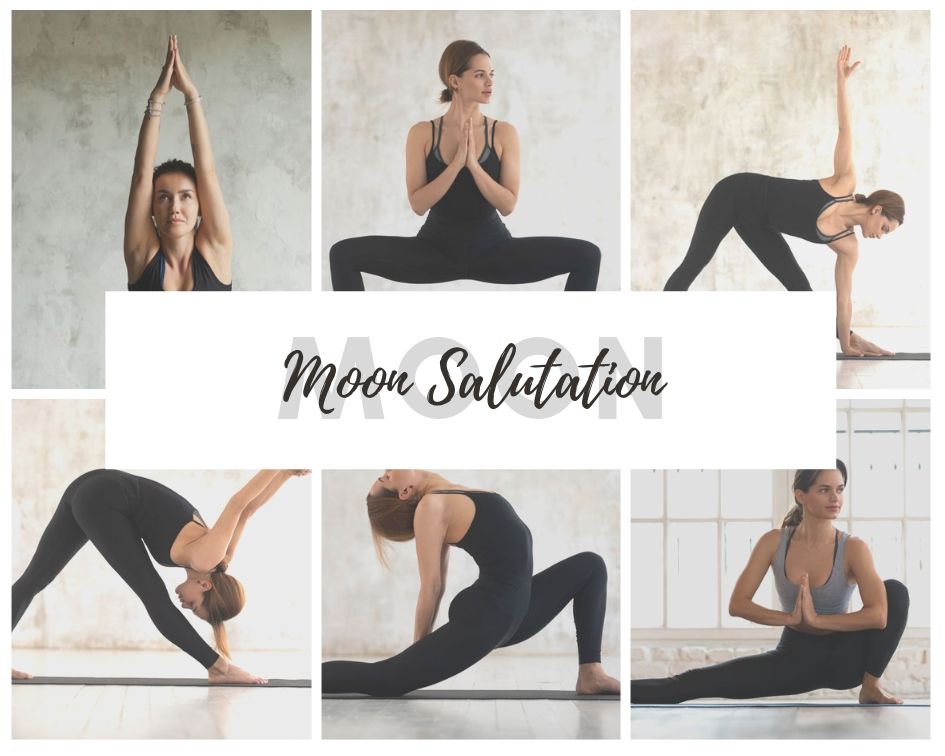 What are Moon Salutations?
What are Moon Salutations?
Moon Salutation is a great alternative to Sun Salutation. In our society typically solar or more masculine impulses are encouraged. This essentially makes it easy to follow worldly pursuits rather than intrinsic awareness. However, the moon is an important representation of the divine feminine force in nature, as evident in several traditional cultures. According to the maxims of yoga, this force is also present in us. In contrast to solar energy that is active, warm, and oriented towards the external world, lunar energy is receptive, cool, and focused on the inner being. The force of the moon can teach us to cut some slack, be attentive to our own needs, and be open towards change.
To establish an equilibrium in our yoga practice as well as our lives, it’s a good idea to combine the power of opposites. These comprise the Yin and Yang, which denote feminine energy and masculine energy, contraction and expansion, effort and surrender, ebb and flow. It is important to realize the qualities as well as benefits on each side of the pole so that unity and balance can be achieved between them.
In yoga, the Sun and Moon salutation practices enfold different and often binary qualities. However, they are a perfect complement to each other. Given this context, Hatha yoga looks to unify these ostensibly opposing elements, thereby giving rise to balance and harmony.
When and How to Do Moon Salutation
These yoga sequence can be a part of a longer yoga session. Alternatively, you may also practice them in isolation as a restorative sequence to soothe and calm the body. It is a good idea to do them in the evening as the calming, meditative quality of the poses helps to strengthen the connection to the breath, thereby preparing the mind and body for a well-rested sleep.
While practicing Moon salutation poses, remember to breathe through your nose. This warms the air entering through the nostrils and bestows a meditative aspect to the sequence. However, you want to ease a little in case you’re struggling to breathe. Working within your range of abilities and limits is always the best option.
Benefits/Advantages
Since the Moon Salutation yoga postures focus mainly on the lower part of the body, they’re great for individuals who find it difficult to rest their body weight on their arms. Moreover, there are other benefits of Moon salutations. The exercises increase flexibility of the limbs and improve the balance and functioning of the circulatory, respiratory, and digestive systems. They help stretch and strengthen all the major muscle groups. Moon salutation sequences essentially replenish the energy lost during the day’s activities while cultivating lunar nectar, also known as soma. These exercises help create serenity in our busy lives.
Moon Salutation Sequence
1. Mountain Pose

Stand with your legs apart and stay rooted to the ground. Press your palms together in the prayer position or Anjali mudra with your thumbs placed on the sternum. Raise your head towards the moon, shut your eyes, and imagine the moon to be between your eyebrows, at the point where the Ajna chakra is located. Then gradually let your focus emanate to the other parts of the body. Take some deep, strong breaths and start.
2. Standing Crescent Pose
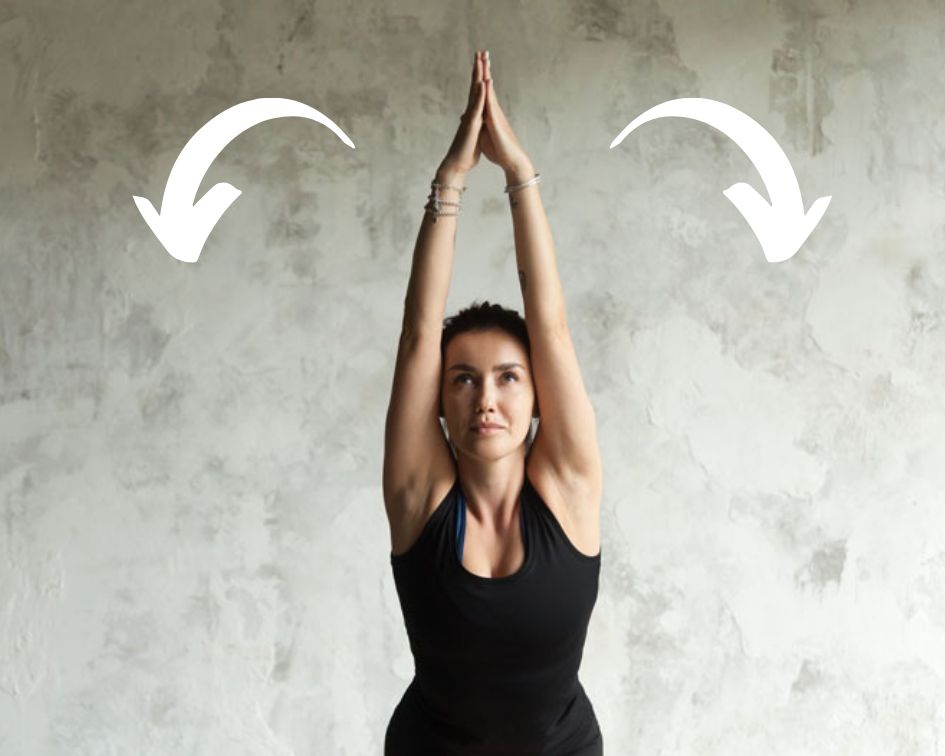
Exhale while extending your arms and remaining rooted to the ground. Draw up the energy through your legs, chest, and crown. As you breathe out, lean to the right side while your heart stays open. Inhale come back to center, exhale and lean over to the left.
3. Goddess Pose
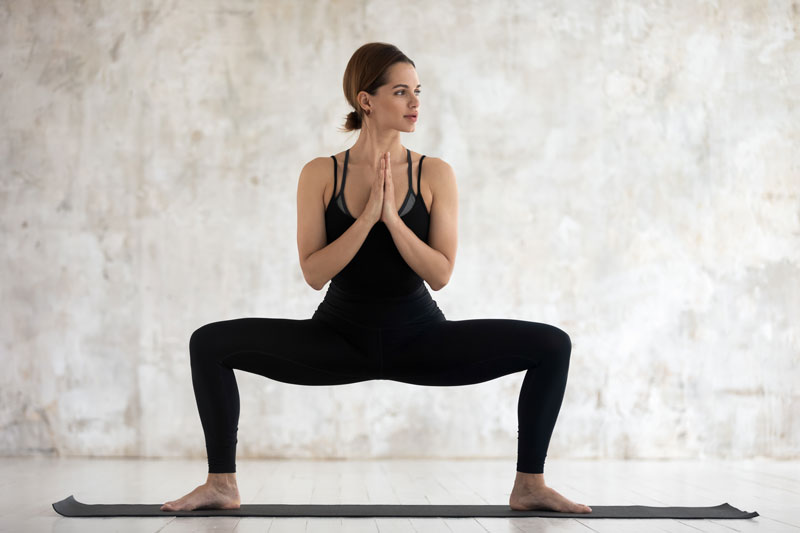
Exhale, step your right foot apart, toes pointing slightly out. Bring your hands to a prayer in front of your heart. Then soften the knees and squat down as deep as you can or until the hips are in line with the knees. Keep the knees in line with the ankles and the back straight.
4. Triangle Pose
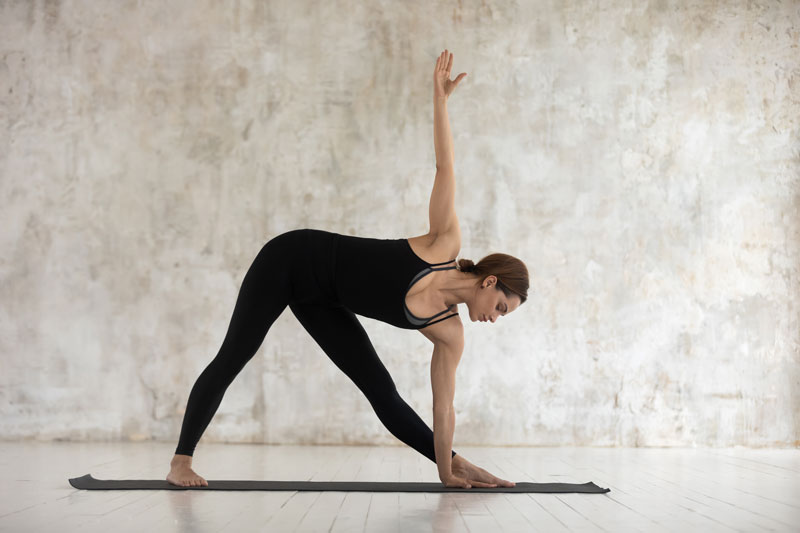
Inhale, extend the legs and turn both feet to the right. Exhale, reach over the right leg and lower the right hand to the shin, on a block or to the inside of the right foot. Extend the left arm to the sky. With your next inhale, role the chest open to the sky.
5. Pyramid Pose
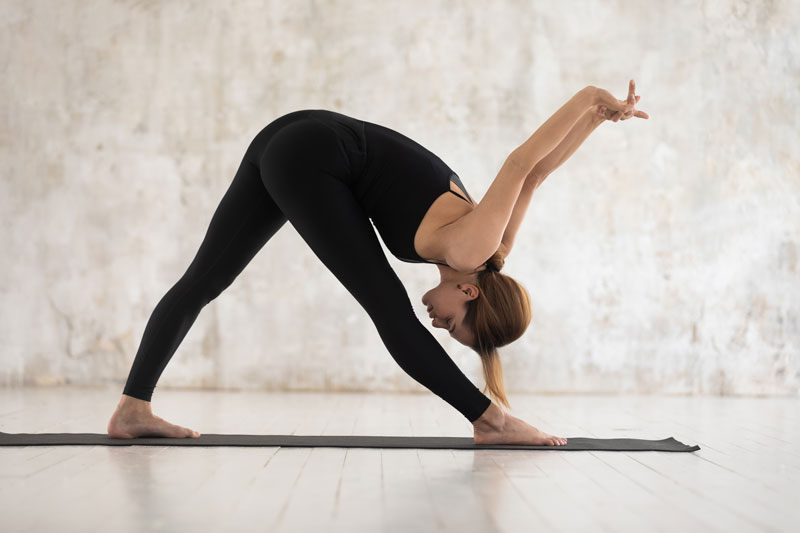
Exhale, bring your left arm down to frame right foot with your hands. Step the back foot up a few inches and turn the hips forward and fold over the straight right leg. Option to interlace the fingers behind your back and include a shoulder stretch.
6. Low Lunge
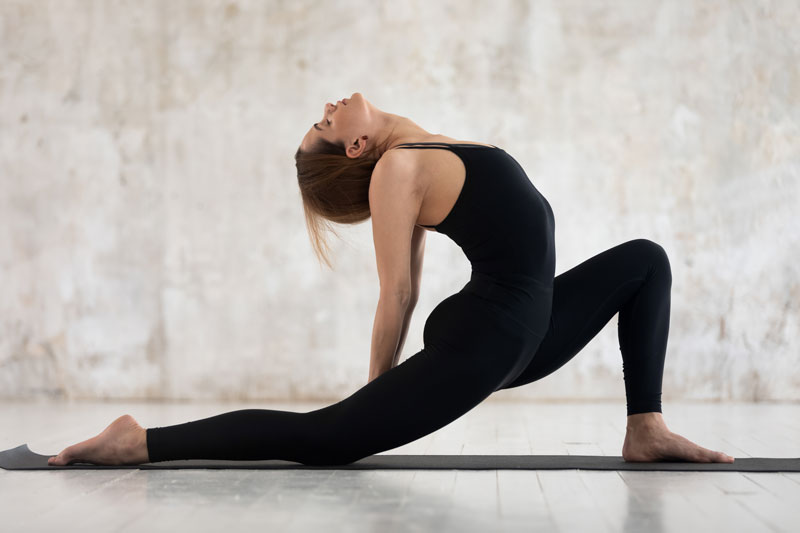
Release your back knee down and bend the right knee so you are in a low lunge position. Inhale, open your heart and chest and keep the right knee in line with the right ankle.
7. Side Lunge

Inhale and bring your pelvis to the right side, close to the right ankle. Your hands can be on the mat or in a prayer in front of the heart. Make sure your step the left foot back and bend the right knee so you come into a lunge position. Make sure the knee stays in line with the ankle and push the left thigh up and back.
Now walk your hands to the left ‘rewind’ the poses we have already done
- Side Lunge to the left
- Low Lunge
- Pyramid Pose
- Triangle Pose
- Goddess Pose
- Mountain Pose
Consider doing as many rounds of Moon Salutations as you want. You may try them in the morning as a calming way to begin the day. Practicing Moon Salutations during the evening can reinstate peace and balance in your overall being. It will likely lead to a feeling of serenity throughout the week.
Check our post about Sun Salutations A & Sun Salutations B.
